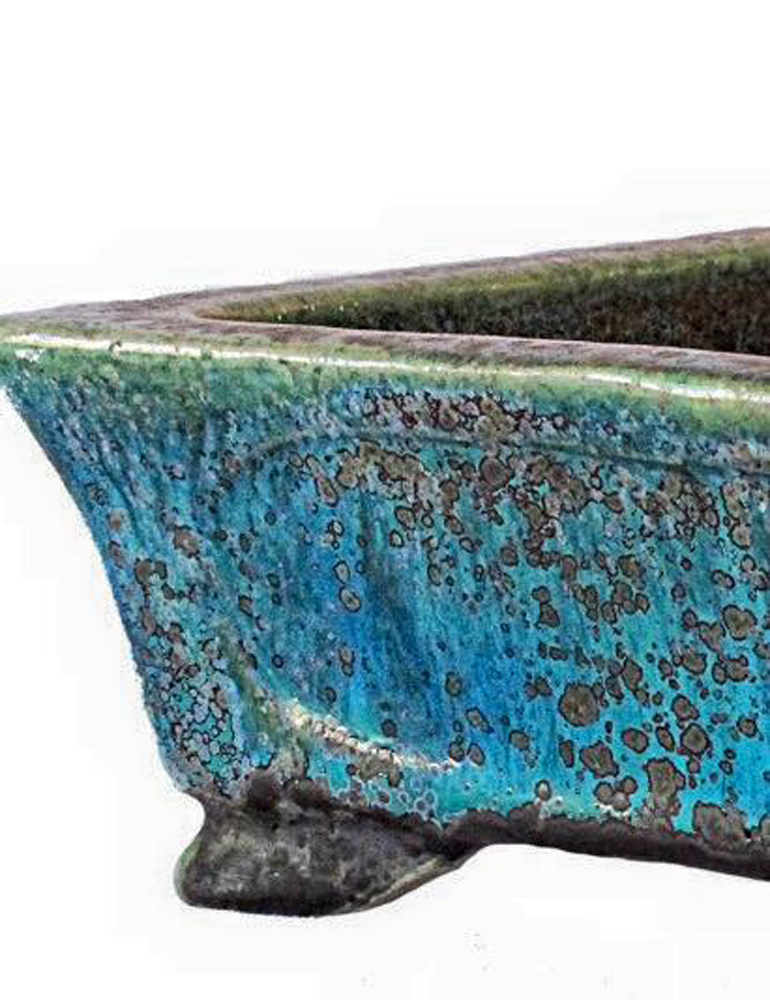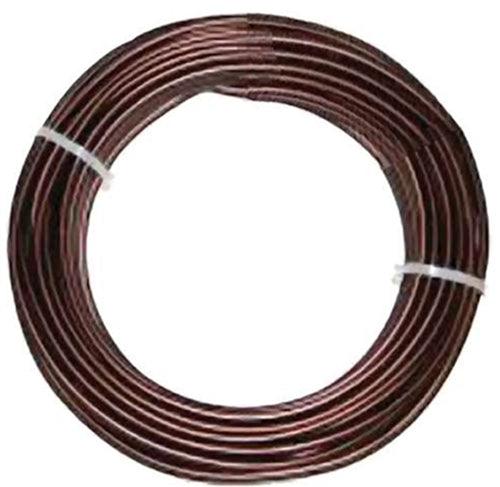–
Majestic Bonsai Vista
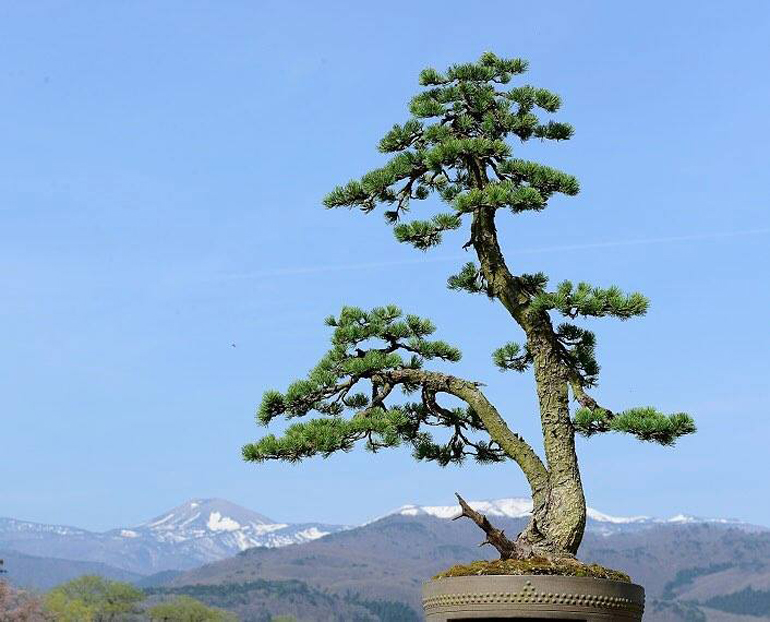
You don't see that many bonsai photos with such majestic vistas in the background. I don't know where the shot was taken, nor do I know the variety of the tree but I do know that the photo and the tree are from Yoshio Nihei.
Continuing from yesterday with bonsai we found on Magdalena Chiavazza’s timeline (we had trouble with the link yesterday, so I hope this one takes). Magdalena doesn’t offer the varieties (except for the Satsuki azalea below) but she is meticulous about the all-important attribution
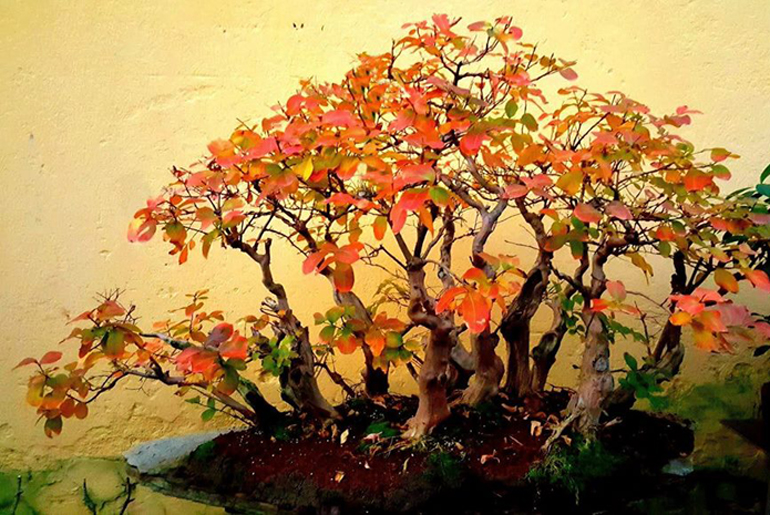
Seduction. Again we don't know the variety but we do know that Magdalena found the photo on Martin Aloi's timeline
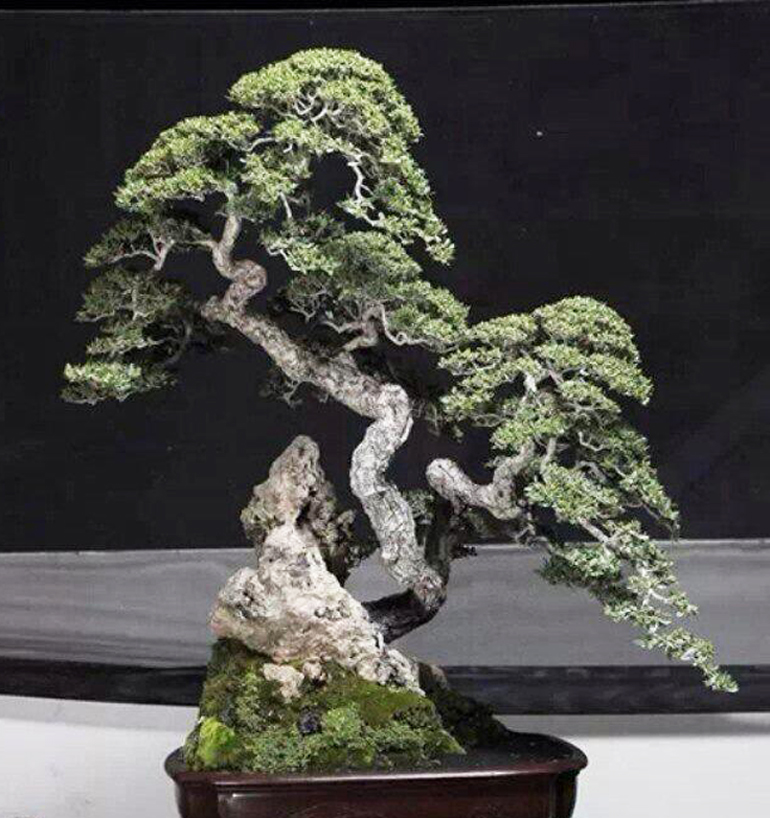
Here's Magdalena's caption with machine translation... Tonino Guarracino... Tú eres el autor de este hermoso ejemplar? Gracias!!! You are the author of this beautiful specimen? Thank you!!!
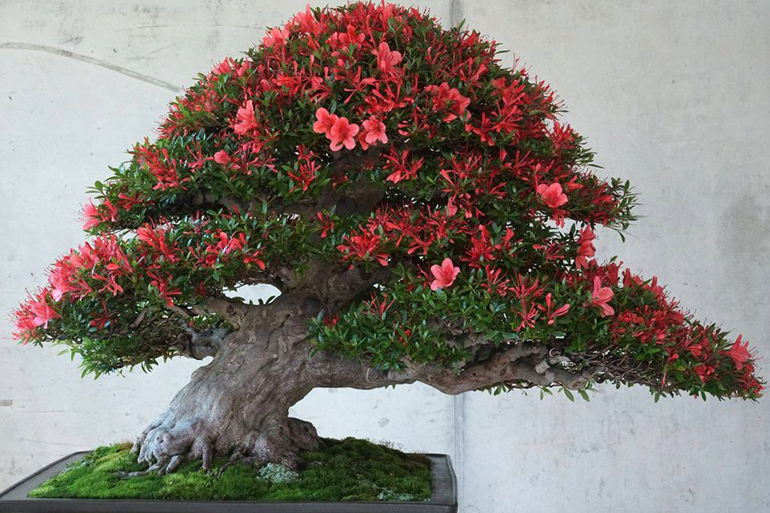
Magdalena provides attribution and link with this powerful Azalea... Bonsai-Satsuki Hans-Herbert
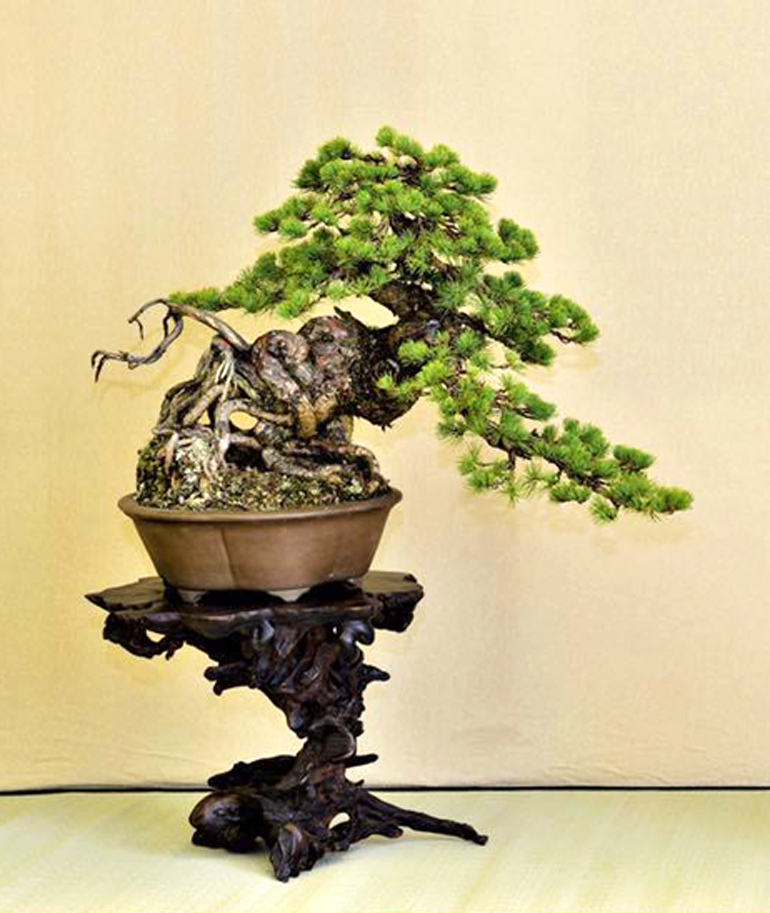
Another one by Yoshio Nihei. I cropped it for a closer look at the main tree. The original photo is just below
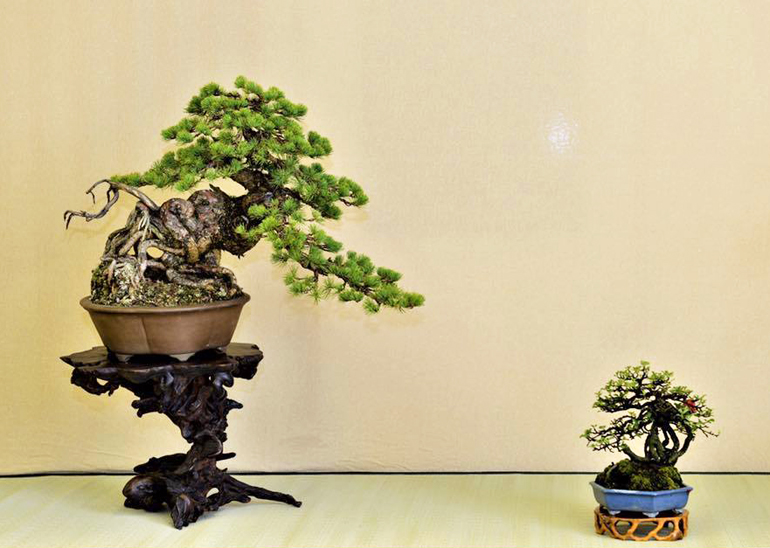
Okay, not a bonsai but I thought you might like this anyway. Here's Magdalena's caption with machine translation and my comment...Bellisimo pastel en papel; Un paisaje muy bonito de la Artista: Martina Zingler. Beautiful cake*on paper; a very beautiful landscape by the artist: Martina Zingler. *The mind of a machine... pastel = pastry = cake
Magdalena’s Mixed Media Bonsai
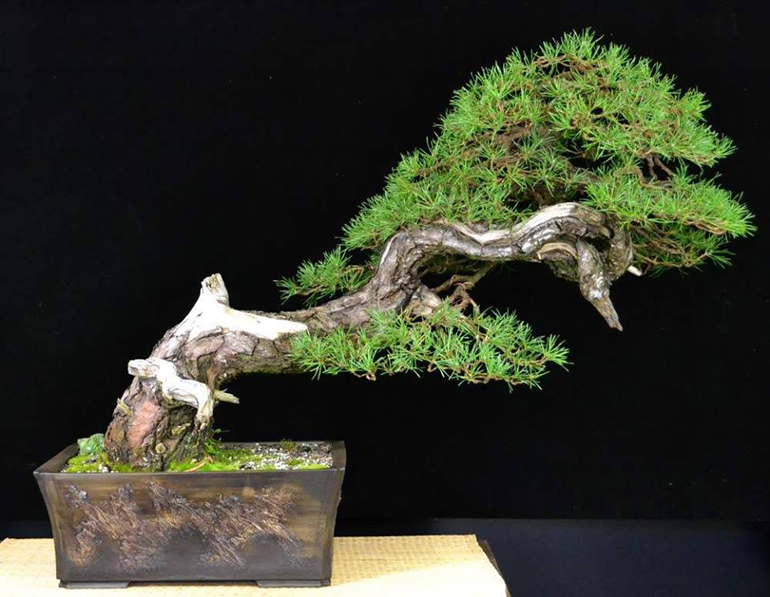
I'm not sure what kind of tree this is, though if I had to guess, I'd say it's a freshly leafed out Larch. But don't quote me. I found it and all the other photos shown here on Magdalena Chiavazza's timeline. Magdalena's caption for this one is... Oh!!! me encanto, hermoso ejemplar!!-Christian Przybylski (the artist). The machine translation is... Oh!!! I love it, beautiful specimen!!- Christian Przybylski
Last night I spent about and hour on facebook looking for something new when I stumbled upon Magdalena Chiavazza (for some reason I couldn’t get the link to take). None of the trees or art belong to Magdalena, but that’s okay, everything is attributed and linked, and attribution warms my heart (see our last two posts). And Magdalena’s good eye doesn’t hurt a bit.
Continued below…
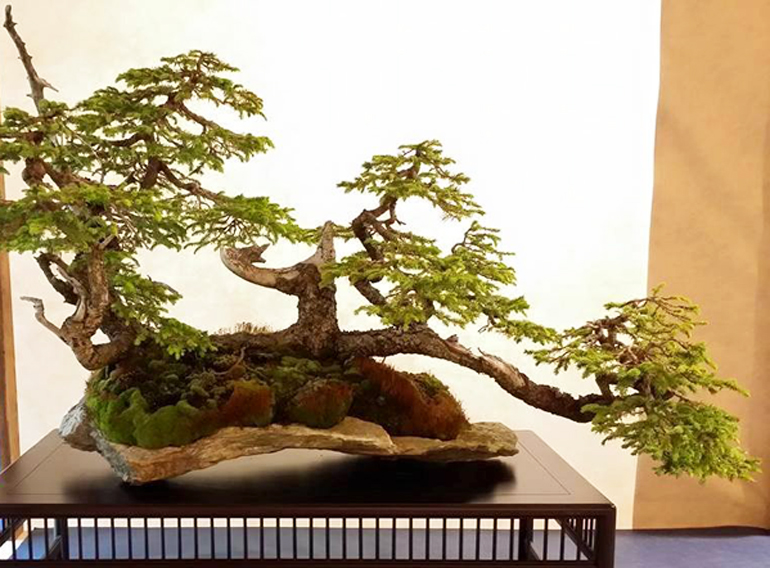
I cropped off part of this tree because of some serious distraction (the uncropped original is below). Like all of Magdalena's captions, this one includes the artist's name and link... Hermoso verdad?--Andreas Holzer. I can manage this one with my primitive Spanish... Beautiful, true?
Continued from above
The only thing missing are the varieties of the trees, but given all the great attributed and linked shots, we can live with it. Enjoy!
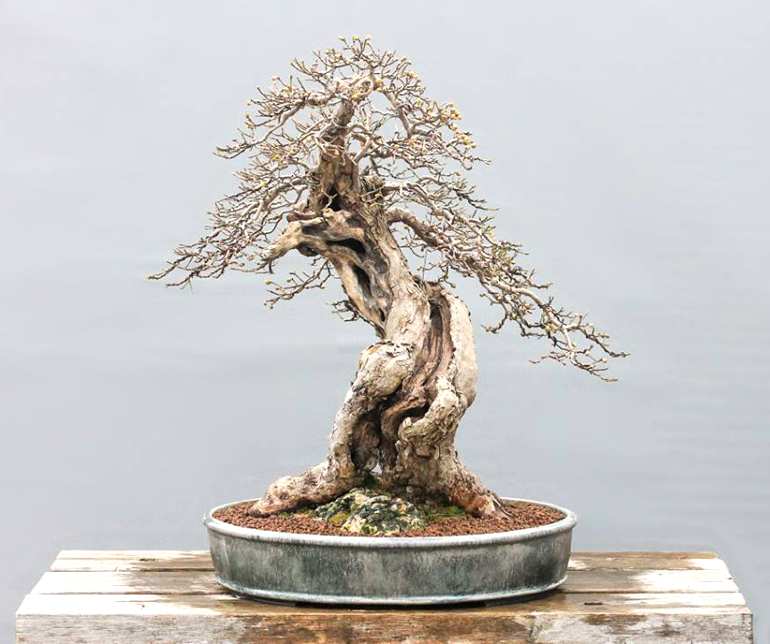
Josef Burschl; Hermoso ejemplar!!!
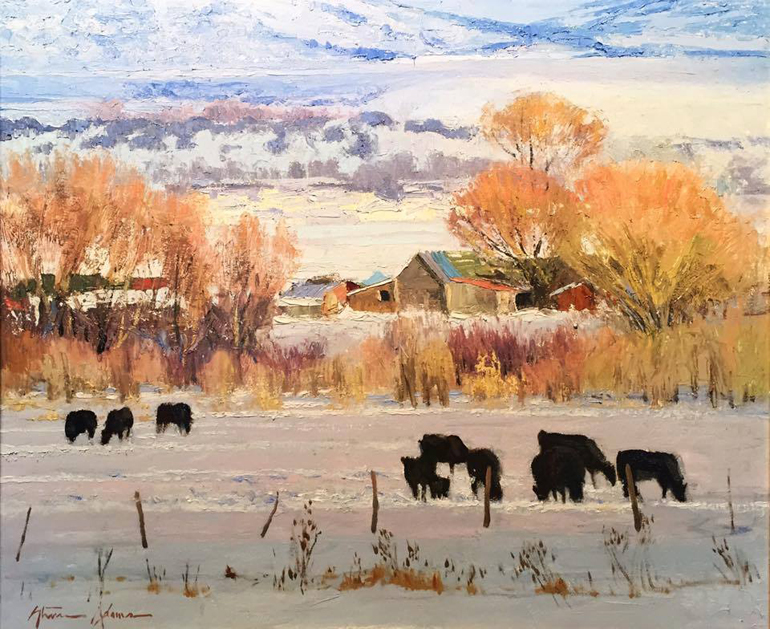
I couldn’t resist. Here’s Magdalena’s caption… Si voy a mostrar Arte; que sea de la buena!!!! bello trabajo del Artista:: Steven Lee Adams me encanto!!! If I am to show art; let it be good!!!! A beautiful work of the art by Steven Lee Adams I love it!!!
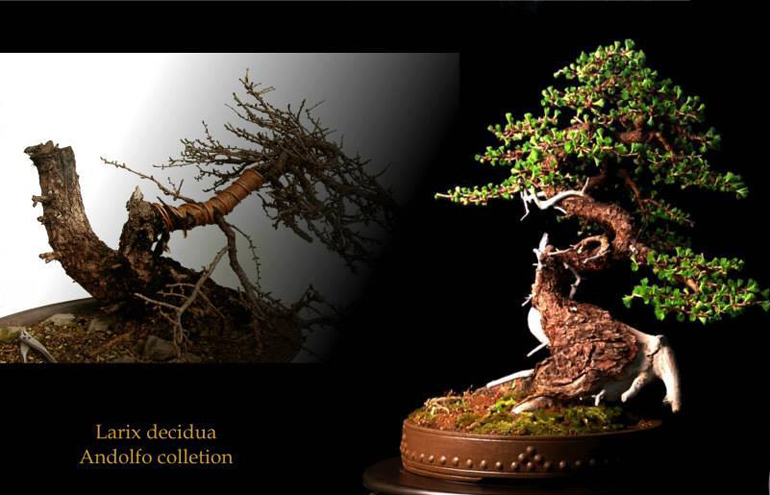
Aha, the variety is listed right on the photo. A European larch with the new buds ready to pop. Here's the caption... Un final estupendo Michele Andolfo!! A stupendous result by Michele Andolfo!!
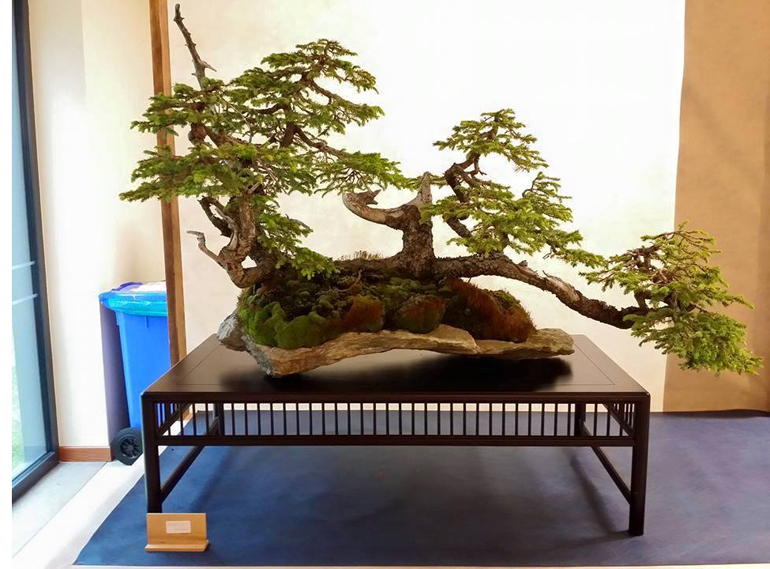
The uncropped original
Spring Bonsai in Full Bloom
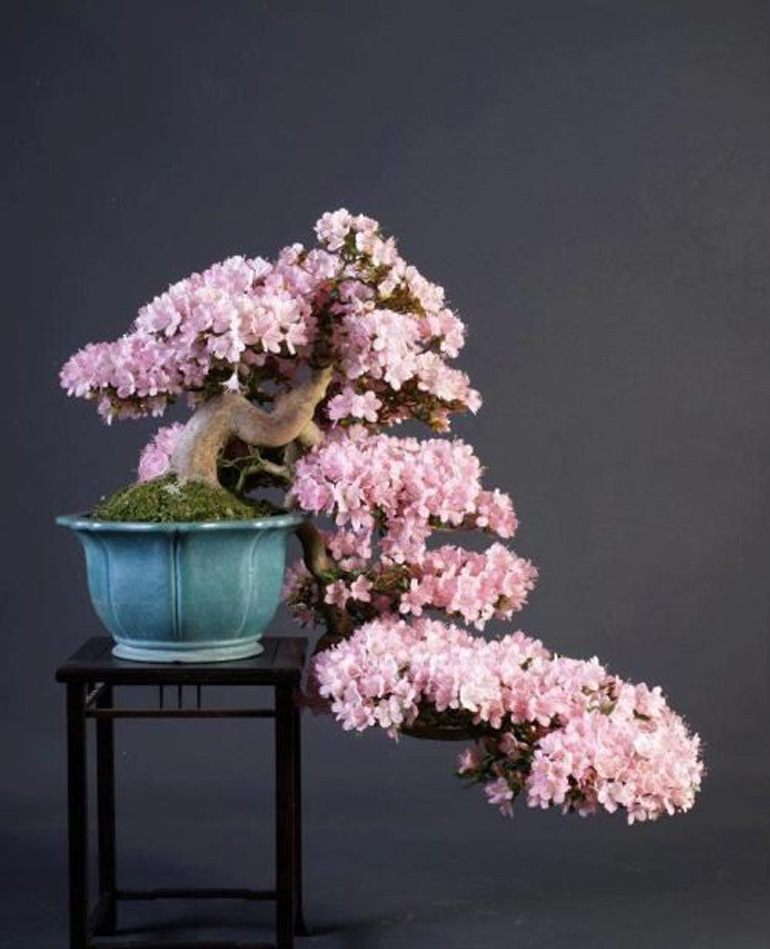
You don't see cascading Azalea bonsai all that often. This flowing full flowering favorite (sorry about that) is by Teunis Jan Klein. Speaking of Azaleas, we just received our spring shipment of Kanuma azalea bonsai soil
Monday morning so we’ll make this quick. This post is borrowed from our archives (March 8, 2017). The photos were originally from a Bonsai Empire post titled Bonsai in Full Bloom.
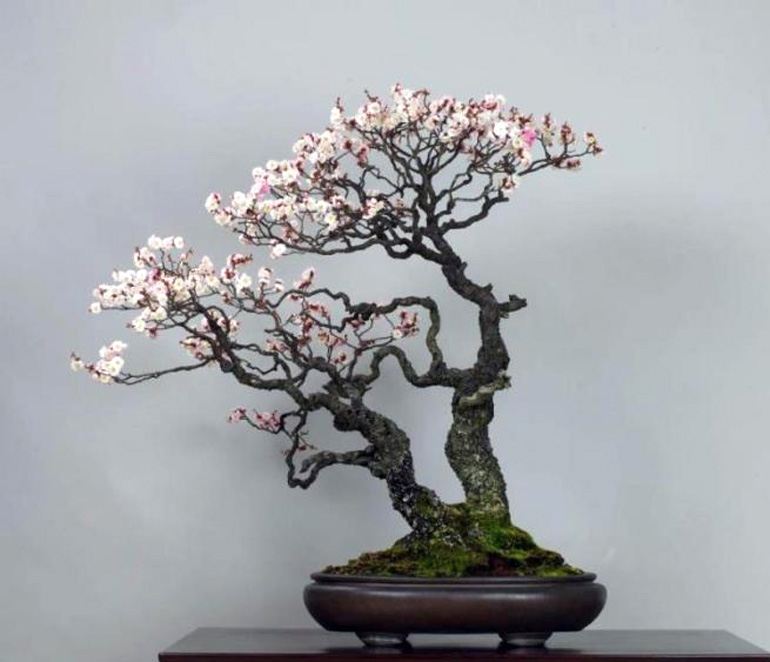
Prunus mume (Japanese Apricot). Photo by Michael Bonsai
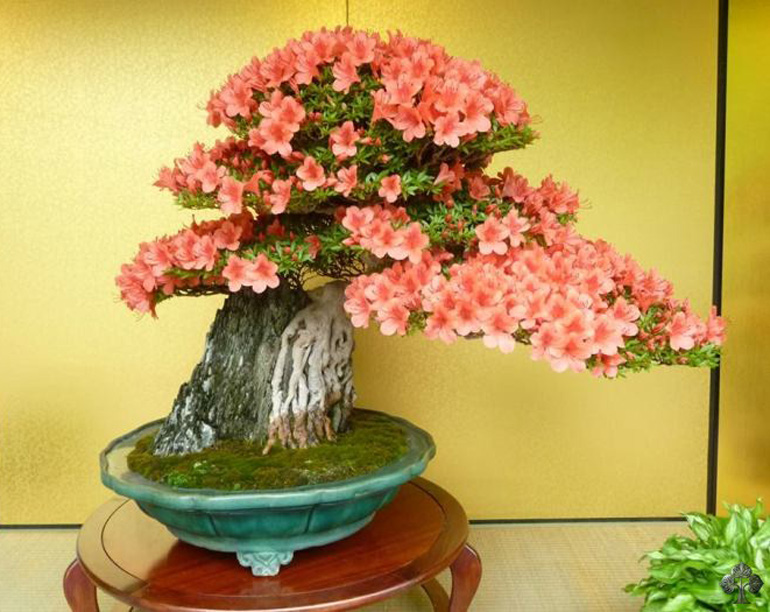
Azalea Bonsai in full bloom, by Makoto Tsuji
–
–
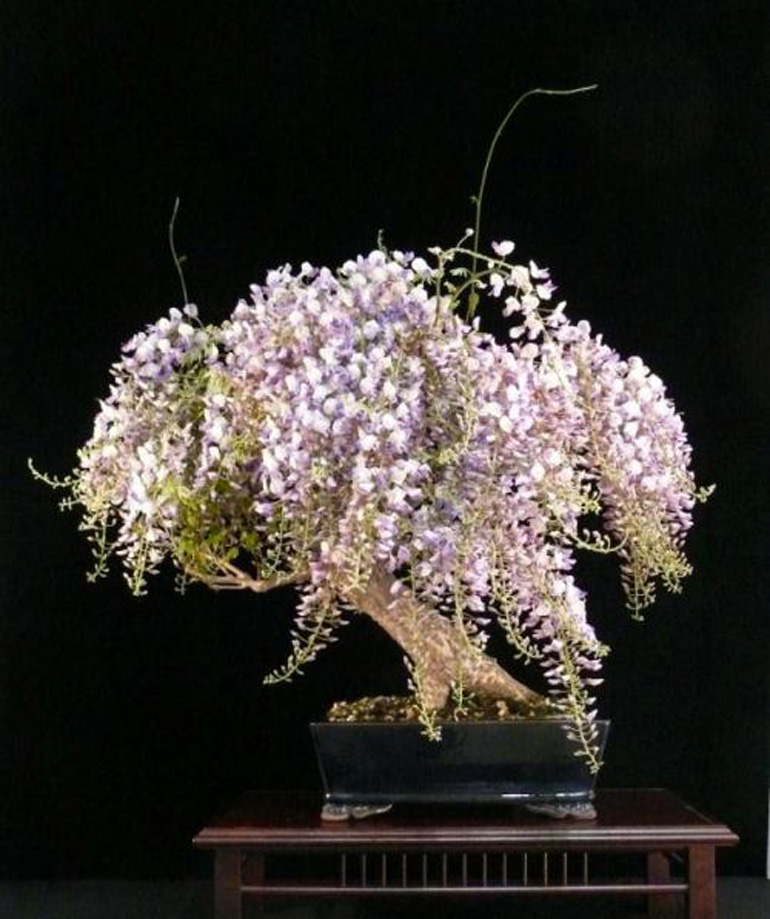
Wisteria bonsai in full bloom by Heike van Gunst
Bonsai Pirates – If you are reading this on any website or blog that is not ours, and is not attributed to us, then it has been pirated
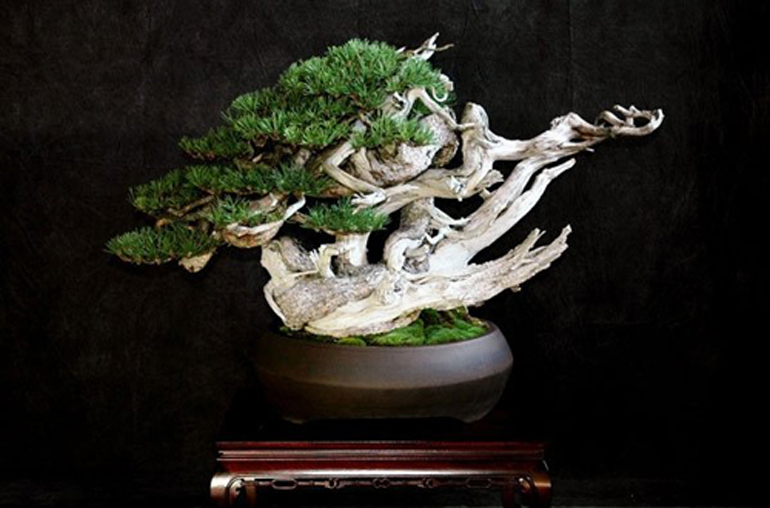
This wild Mugo pine has nothing to do with our bonsai pirates theme, though it may raise some eyebrows given its break with traditional bonsai styles, particularly traditional Japanese bonsai styles. It was posted by Sandro Segneri of the Bonsai Creativo School and Academy. To reiterate, it has nothing to do with our bonsai pirates theme.
Yesterday it was digital bonsai theft, today it’s piracy. Two ways of talking about the same thing, or has the severity of the crime graduated from misdemeanor to felony (figuratively and maybe literally)?
The following was originally written in February, 2010 and reposted in 2015 (with some changes then and now)…
At least one blog has been pirating our posts for a long time. No links and no mention of Bonsai Bark or Stone Lantern. Nothing. If you are reading this on any website or blog that is not ours, and is not attributed to us, then it has been pirated. If this is the case, please visit us at Bonsai Bark. Thank you.
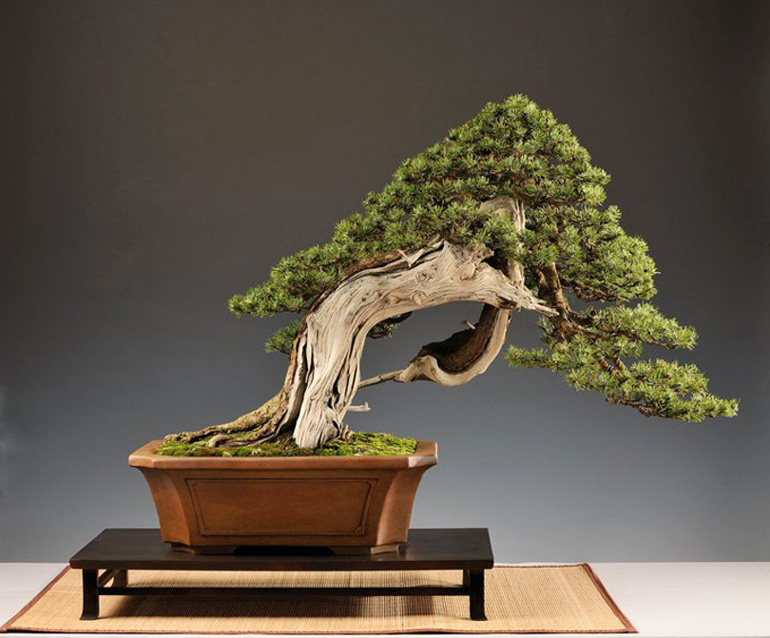
This powerful Mugo pine is reminiscent of the revolutionary Japanese bonsai back in the 80s and 90s. It belonged to Carlos van der Vaart when we originally posted it in February 2011. Like the one above, it was most likely collected in the mountain of Europe. Also, like the photo above it has nothing to do with our piracy theme
NEW 20% to 70% off Site Wide Sale*
Includes our famous Roshi Tools
quality materials & craftsmanship
make for precision, durability and beauty
and at much more reasonable prices than you might expect
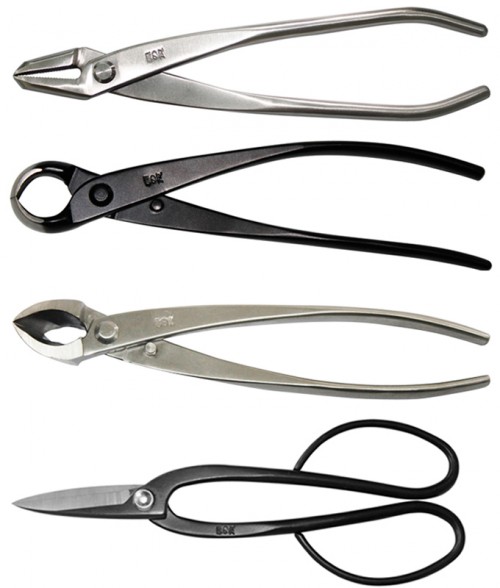
and the rest of our vast selection of Bonsai Items at Stone Lantern
*Green T Turntables & 3 books are excluded due to contractual obligations
Digital Bonsai Theft & Other Crimes & Misdemeanors
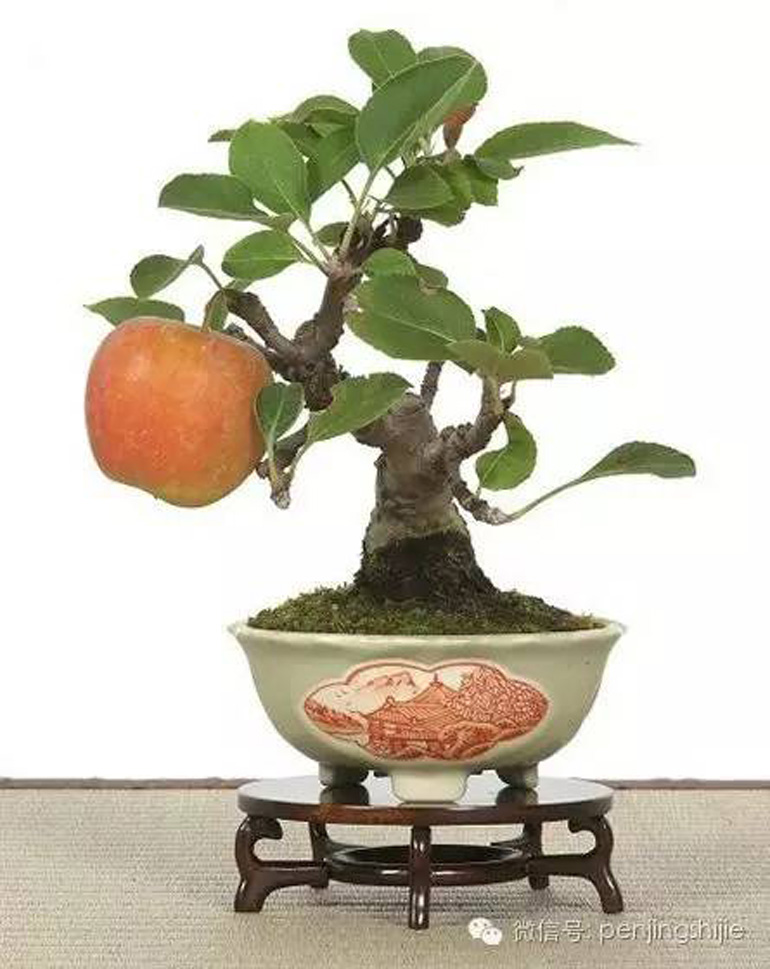
Did that huge apple really grown on this small tree? Occasionally you see fruit that is glued on, but in this case I think it's the real deal.
There’s something a little shady about putting your logo on photos that don’t belong to you, though in a world with more than enough serious corruption, this practice barely registers.
Continued below…
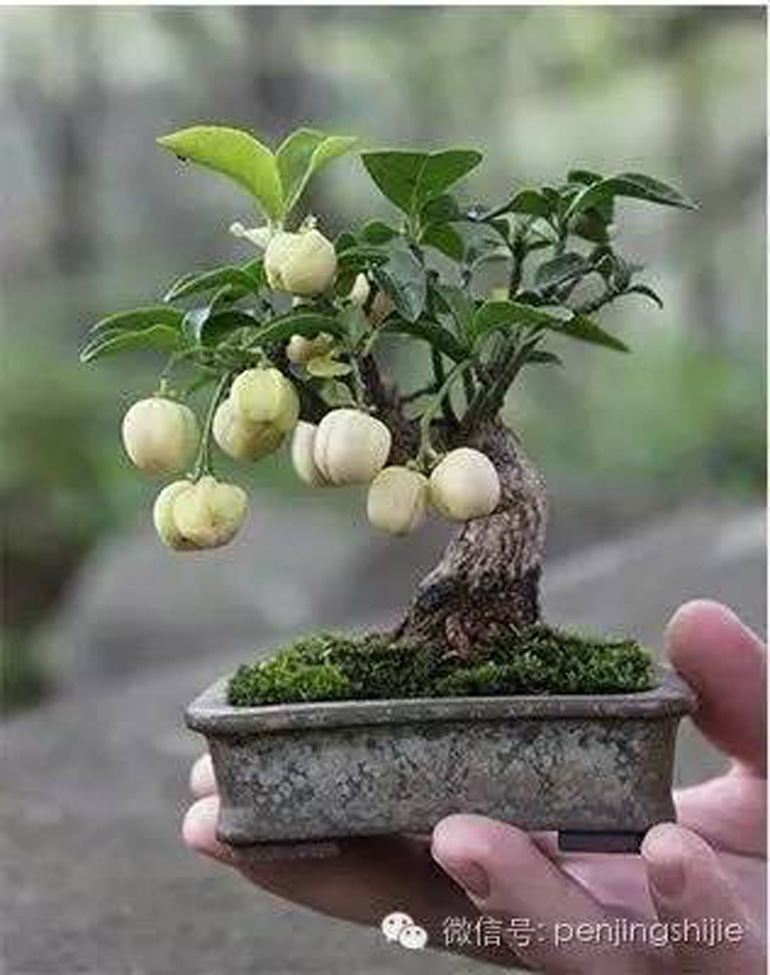
I've seen this tree before, but can't remember where, or what it is. It's even possible that it has appeared here on Bark.
Continued from above…
I can’t read the text where I found these photos (I’m not going to link them, for obvious reasons) but you can assume that they are, in addition to being falsely represented, unattributed.
All this might beg the question… why post these trees? The answer is, I like them. Plus they provides an opportunity to bring up malfeasance on social media, a topic worth mentioning.
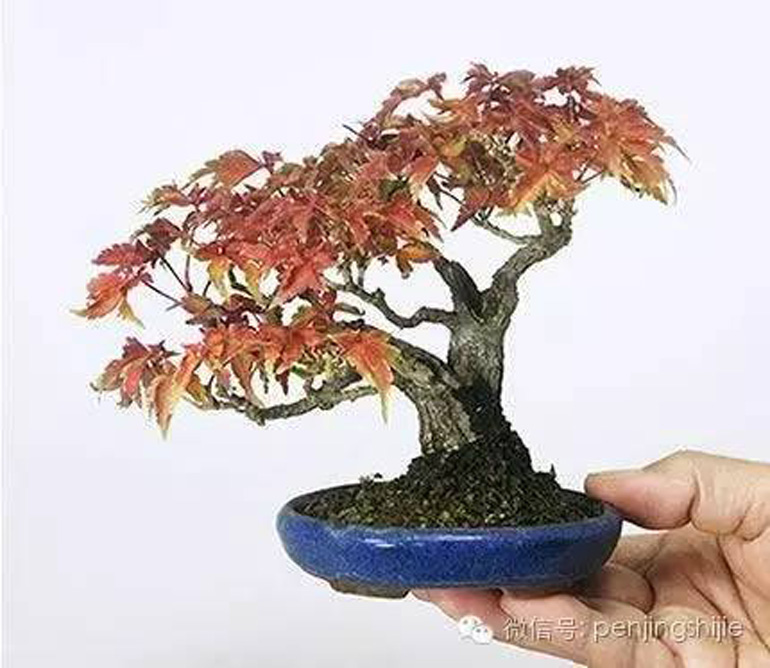
A sweet Japanese little maple
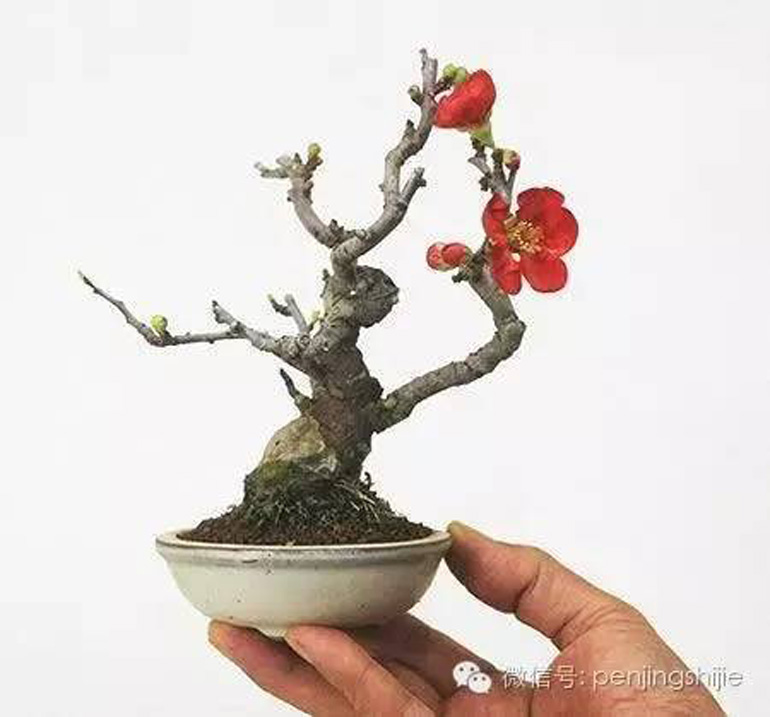
I've always liked quince flowers
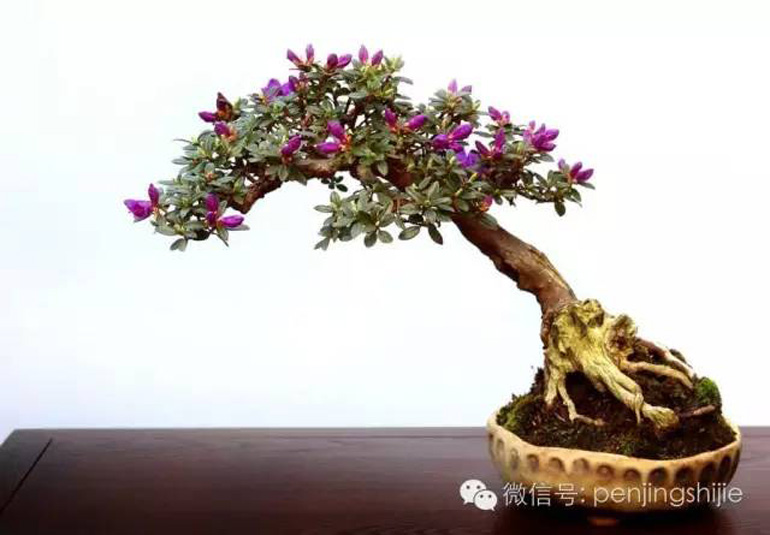
I would recognize this little Rhododendron anywhere. It belongs to Morten Albek and appears in his Shohin Bonsai book (out of print) and on his blog.
Beauty Doesn’t Always Conform to Our Expectations
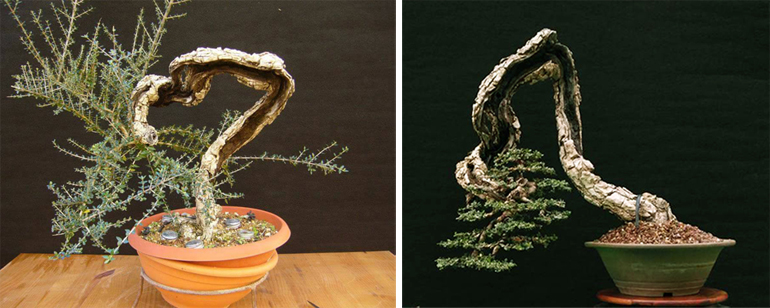
Before and after. This impressive and very unusual European olive (Olea europaea L. var. sylvestris) was styled by Javi Campos Juan.
Continuing with Javi Campos Juan (see two posts from earlier this week)… You don’t often see Olives styled like this one; more like a conifer than an Olive. Regarding this, there is a good argument for styling in the way the type tree naturally grows. Trees that don’t follow this standard often look unnatural. Still, there’s a lot to like about this one and beauty doesn’t always conform to our expectations.
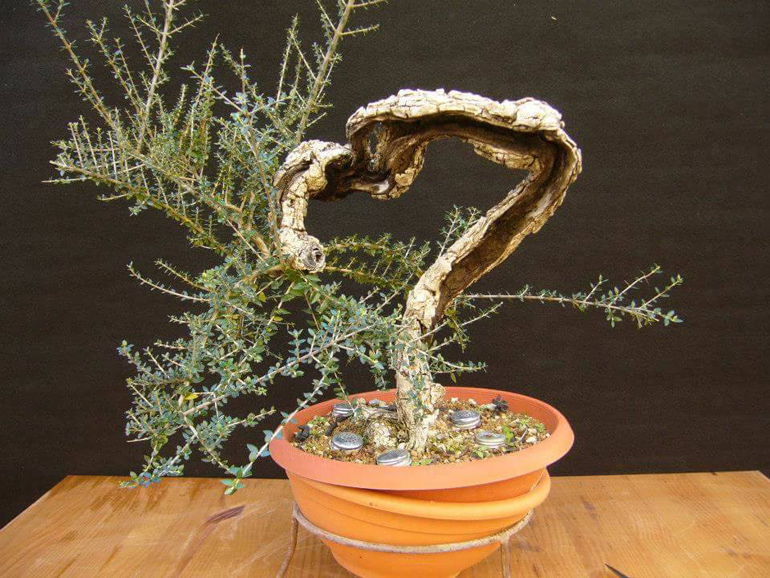
Before
I’ve been following Javi Campos Juan and his impressive bonsai on facebook for a while now. This is our third post this week featuring Javi’s trees. We originally featured this one February of last year (with some value added today)
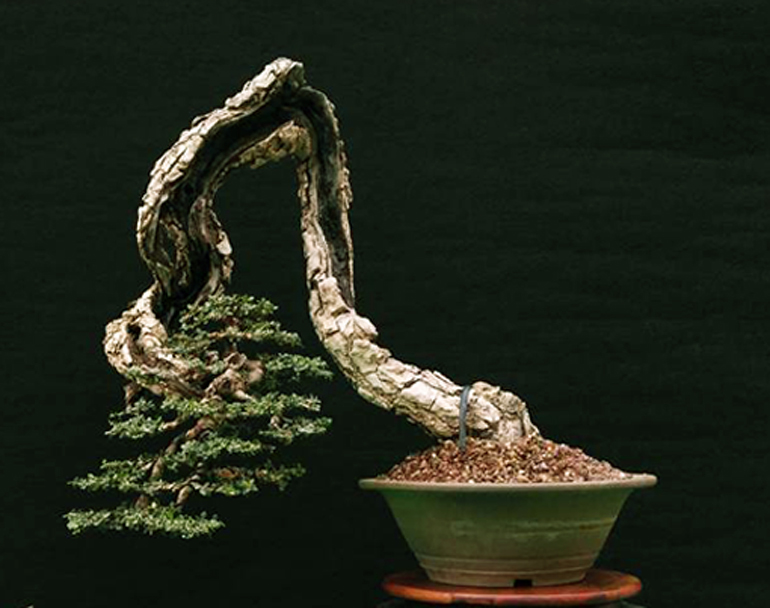
After. Several big changes, including some serious bending of the trunk and plenty of refinement using wire and skilled trimming. Good pot choice tooThe original uncropped shot with companion
Time to Make Your Plans for a Celebration of American Bonsai

This Colorado blue spruce won the All American Award (Finest American Species in an American Container, Displayed on an American Table) at the 5th U.S. National Bonsai Exhibition. It belongs to Jason Eider.
Just a friendly reminder…
It’s time to make your plans. The 6th U.S. National Bonsai Exhibition is the premier North American celebration of bonsai. The one event you don’t want to miss and it’s less than six months away. We’ll see you there!
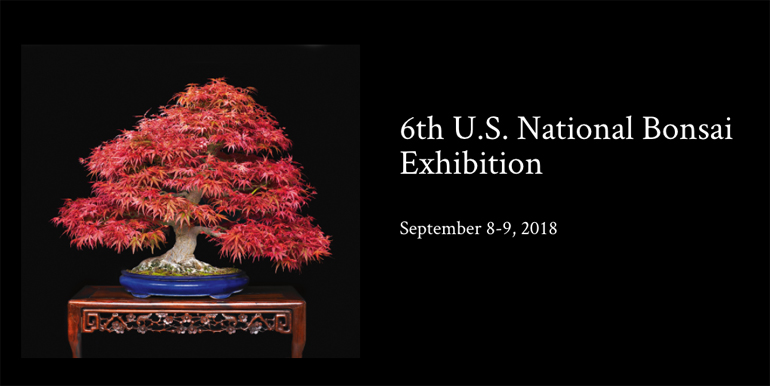
If you would like to submit any bonsai, the deadline for entries is June 1, 2018 (or until the exhibition is filled). If you’re like most people and just want to be there, it’s not too soon to make your plans

Another Colorado blue spruce. This one won the ABS North American Bonsai Award at the 5th U.S. Exhibition. It belongs to Todd Schlafer
The following is from Bill Valavanis’ Exhibition website…
“The world bonsai community will once again be enriched by the display of bonsai gathered from across the United States at the 6th U.S. National Bonsai Exhibition, September 8-9, 2018, in Rochester, NY.
“Like Japan’s Kokufu Bonsai Exhibition, people from around the world attend the U.S. National Bonsai Exhibitions to appreciate and study the diversity of the unique and distinctive species displayed by accomplished bonsai artists from across the United States.
“Towering bonsai from the Pacific Northwest, rugged bonsai from the Rocky Mountains, and tropical bonsai from the Southern swampy regions will be displayed alongside weathered bonsai from the Southwestern deserts and refined deciduous bonsai from the Northeast.”
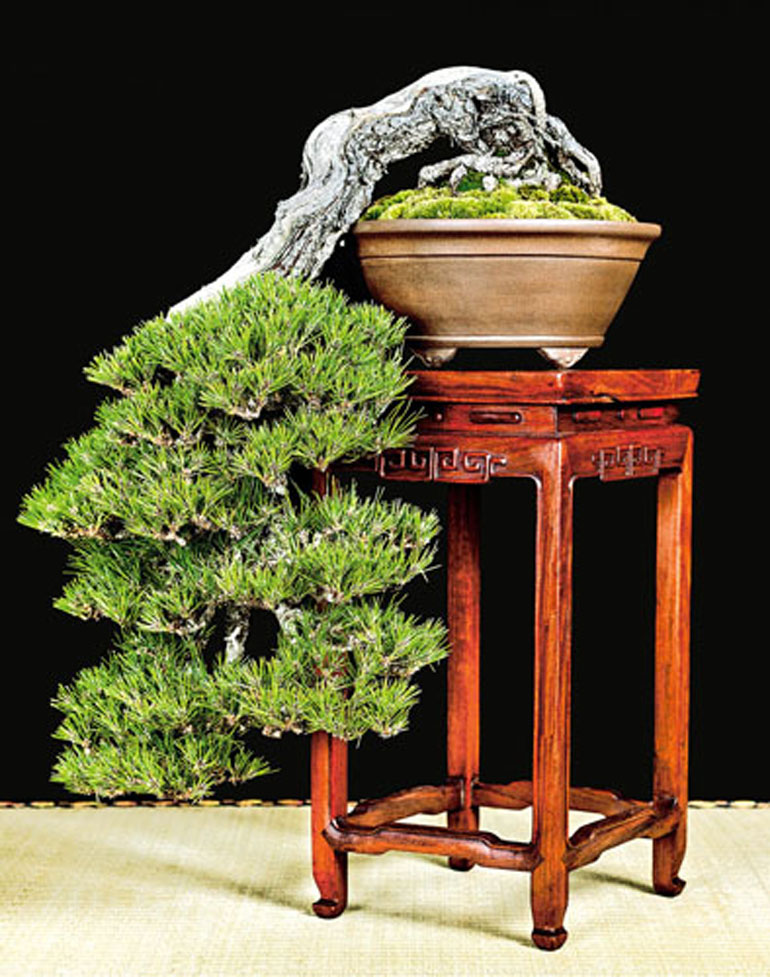
Immigrant species are welcome. This Japanese black pine is also from the 5th U.S. National Exhibition. It belongs to John Kirby. You can find it and over 200 other distinctive bonsai in the 5th Exhibition Album. We still have some albums from the 4th Exhibition as well (1,2 & 3 are sold out, and according to Bill, there are no plans to reprint)
Visit Stone Lantern
and enjoy the best in Bonsai Tools, Wire, Soil
and other essential Bonsai Supplies
*due to contractual agreements, there are a handful of items that we cannot discount
A Bonsai in Hand…
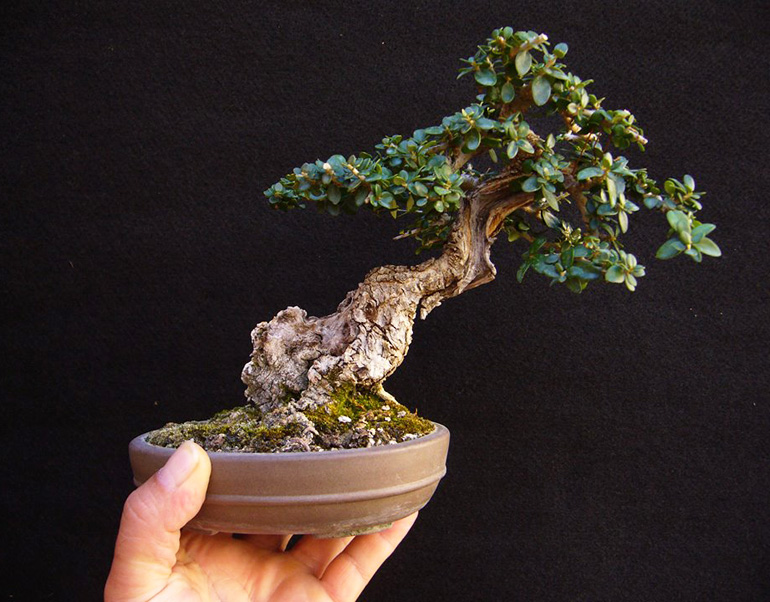
No variety is given with any of the photos featured here and we won't bother to guess.
Another big snow storm is blowing in and there’s too much to do, so we’ll take a shortcut and resurrect a post from August 2016 while staying with our Javi Campos Juan theme (see yesterday).
I’ve always liked photos of hand held bonsai. The hand immediately provides a way to determine the size of a tree and it adds a personal touch, without the more intrusive photos of the proud artist posing with the tree. All the photos shown here were posted on Facebook by Javi Campos Juan.
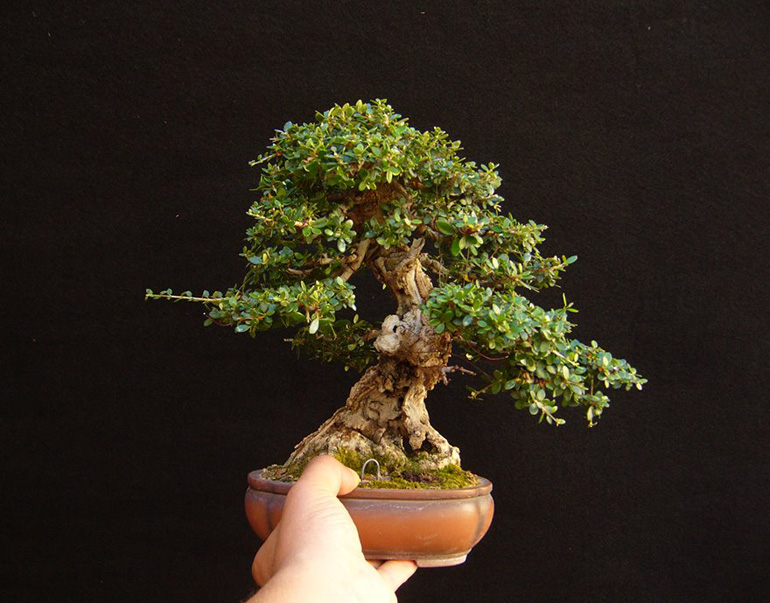
I think the somewhat distracting shoot on the left is for sacrificial purposes. In other words, to draw energy into and hasten the development of the branch. It will be removed once its purpose is accomplished
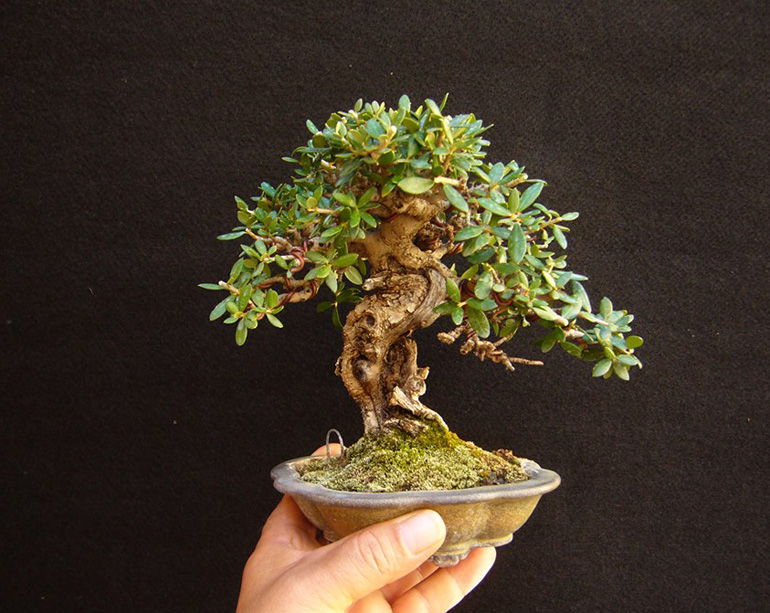
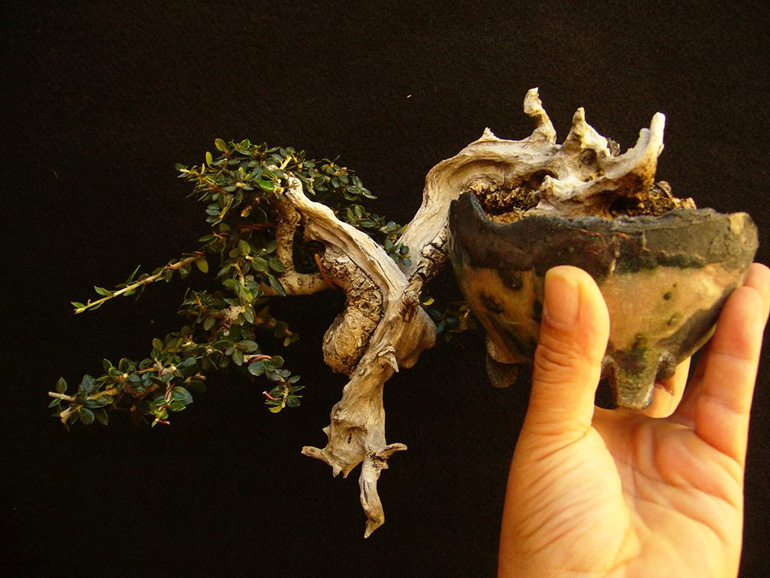
This gnarly little tree with its gnarly little pot also shows a sacrificial shoot.
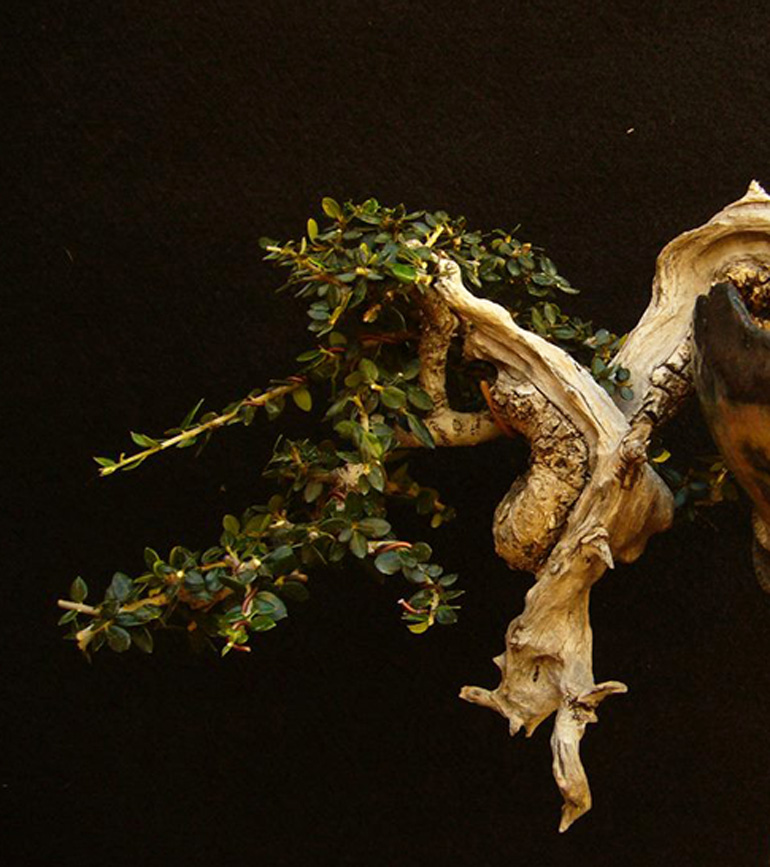
Just wanted to see what the tree looks like without the hand
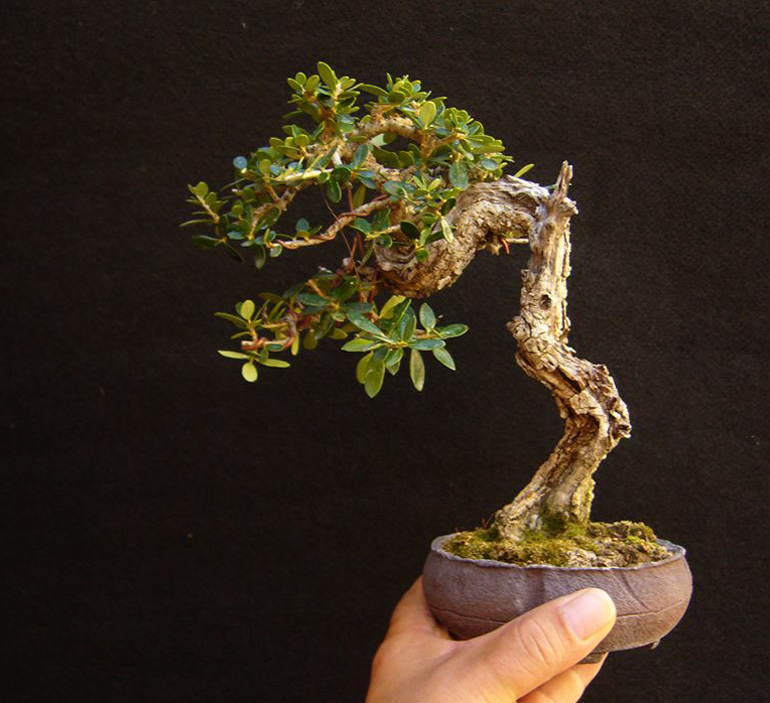
–
What Was Missing?
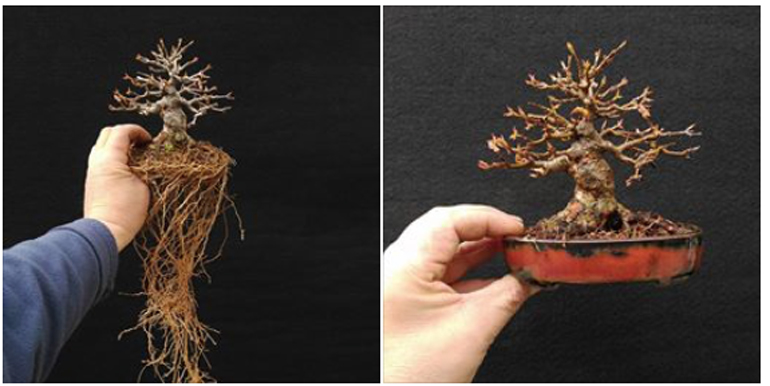
Javi Campos Juan's caption reads Tenía falta? The translation is "Was it missing?" That didn't seem quite right so I checked with Free Translation, which came up with "What was missing?" Anyway, sweet tree (no variety given) and well chosen pot.
I’ve been follow Javi Campos Juan for a long time, but have only featured his bonsai twice and the last time was over a year ago, so we’re overdue. The images and captions are from Javi’s facebook timeline.
–
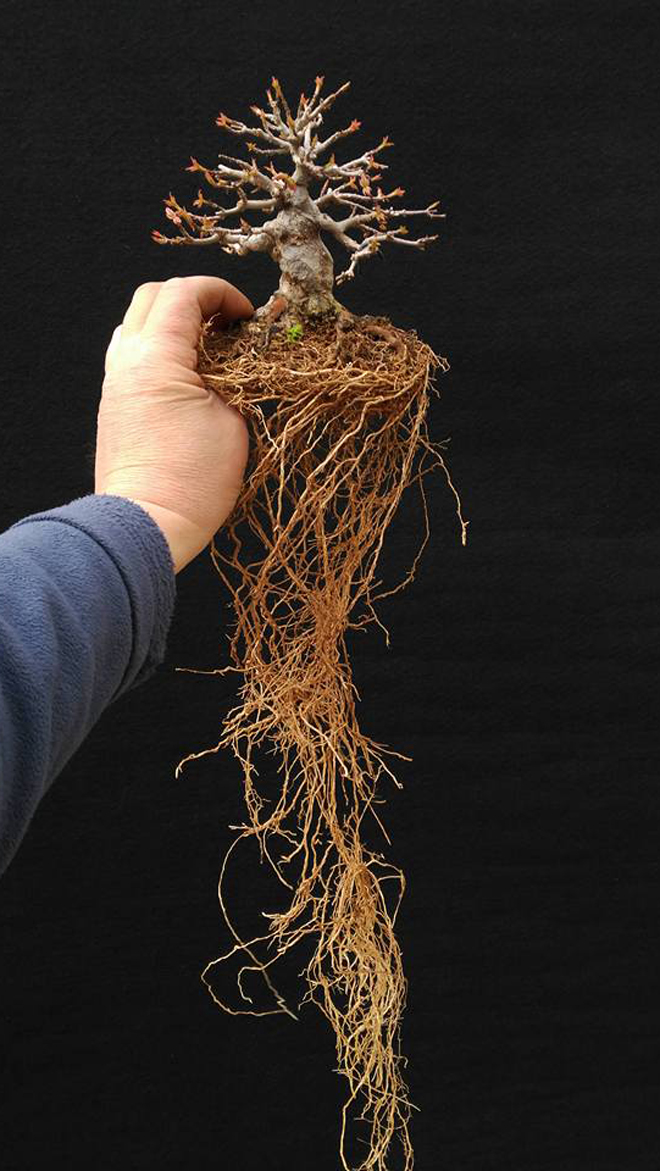
Before. Time to rootprune and repot. BTW, those are exceptionally vigorous looking feeder roots.
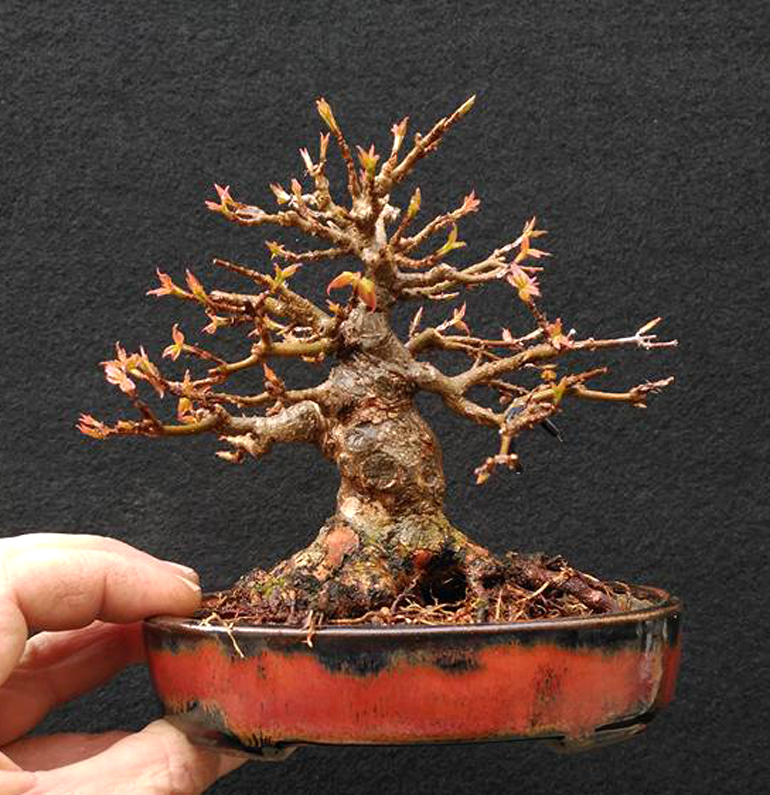
After. Reddish pot, reddish new leaves and even some reddish bark
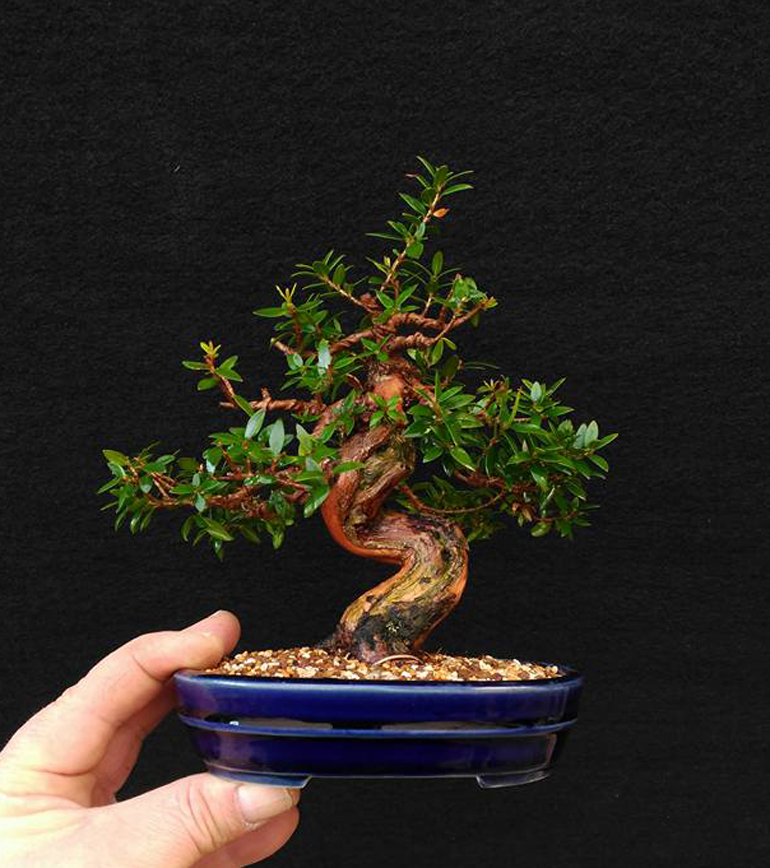
Estaba tan entretenido con estas chucherías que se me olvidó la foto de las raíces. Here's facebook's translation... "I was so entertained with these trinkets (???) that I forgot the picture of the roots." The ??? is mine. Mirto desde esqueje. Maceta Bigei,definitiva esta preciosa Seiko. "Myrtle from sapling. Pot, definitive this beautiful Seiko." Oh well...
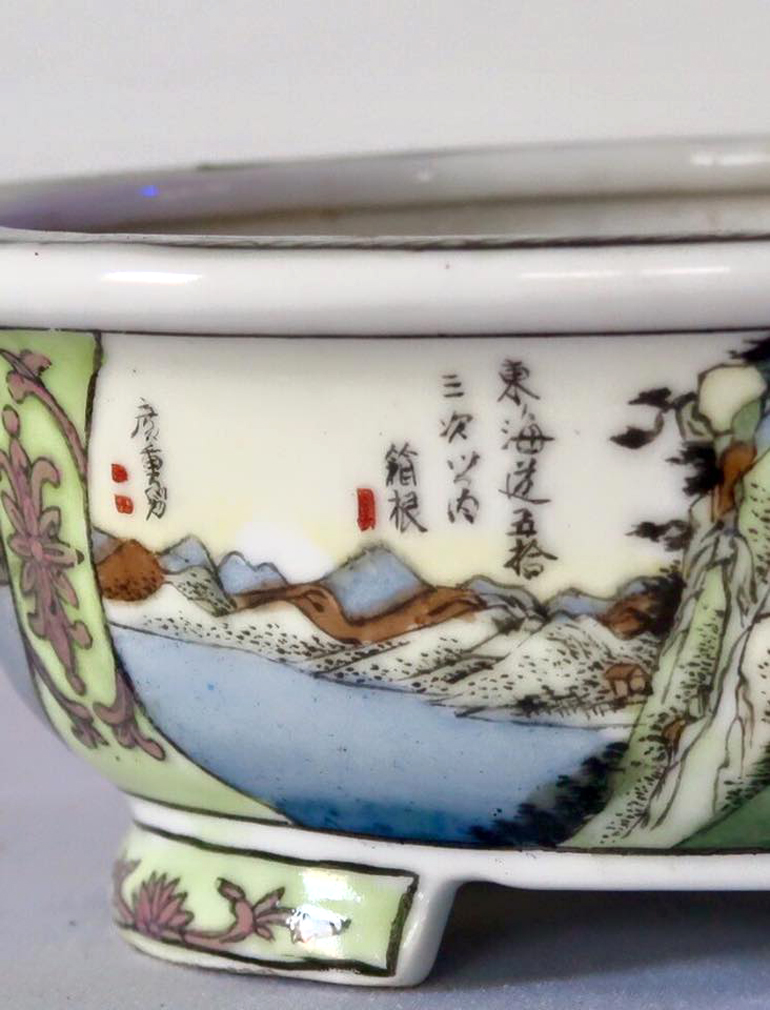
Javi's caption with this and the photo below... PROXIMAMENTE NUEVAS MACETAS DE AUTOR!! http://kyobonsai.com/es/26-de-autor. Yamaaki,koyo,Reiho,Yamafusa...y otras especiales. Your turn to translate!
Powerful Old Oak on Hydraulic Lift Turntable
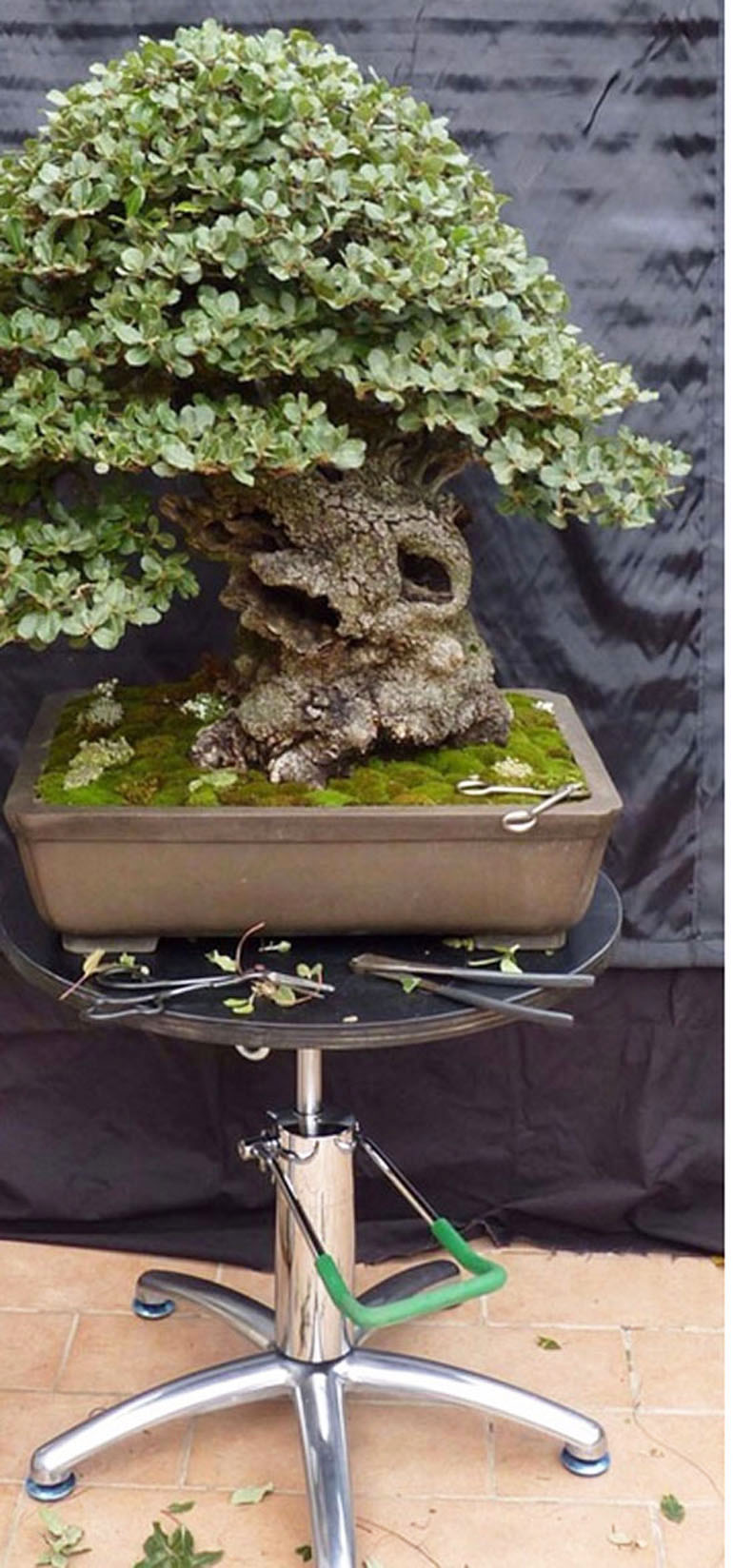
Raffaele Perilli's Holm oak with Green T Turntable and tools

